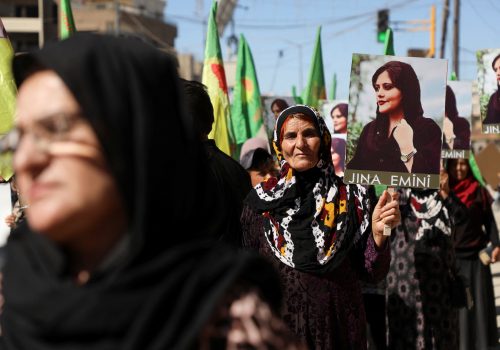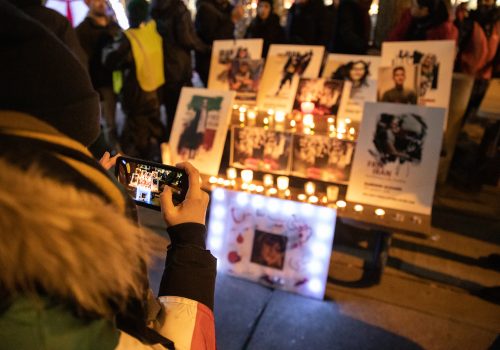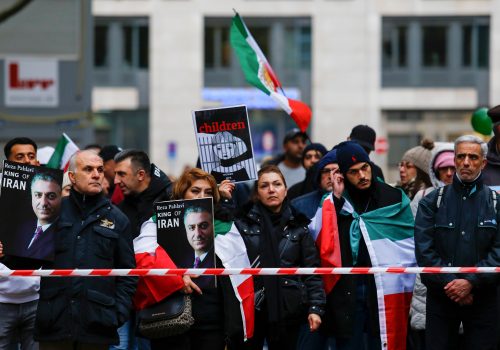Forty-four years of an Islamic Republic. Many now regret the 1979 revolution.
February 11, 2023 marks the forty-fourth anniversary of the establishment of the Islamic Republic of Iran. At this time of year, Iranians have an annual discussion on what has happened to their country since 1979 and debate the many facets of the Islamic revolution that led to the ouster of Shah Mohammad Reza Pahlavi.
While there are disagreements over many aspects of the revolution, most Iranians agree that the country is in a far worse situation because of it. For instance, Faezeh Hashemi, a former parliamentarian and daughter of former President Ali Akbar Hashemi Rafsanjani, stated that she would not have participated in the 1979 revolution. Since the December 2017-January 2018 protests, the largest at the time in terms of geography since the 1979 revolution, demonstrators across the country have consistently called for an end to the Islamic Republic. On some occasions, demonstrators have explicitly expressed regret over their role in the 1979 revolution.
Many Iranians, particularly those who sympathize with leftist organizations involved in the revolution— such as the Mujahedeen Khalq (MEK), the Fedayeen Khalq, and the Tudeh Party—maintain that the 1979 revolution was a positive development in itself, but that the revolution was hijacked by Islamists led by Ayatollah Ruhollah Khomeini. Looking back at the events of 1979 and the immediate aftermath of the revolution, however, reveals that the narrative of a stolen revolution is false.
A “stolen” revolution
While it is true that Islamists led by Khomeini gradually and ruthlessly eliminated their rivals, the notion that the 1979 revolution represented democratic or liberal aspirations is not supported by the evidence. The revolutionary government held a referendum in March 1979, asking the electorate to vote “yes” or “no” on whether they wanted an “Islamic Republic.” The “yes” vote won overwhelmingly. This referendum, however, took place amid an atmosphere of chaos—with former Prime Minister Shapour Bakhtiar in hiding—and repression, which included Baháʼís being targeted and officials of the Pahlavi government being executed after sham trials.
Meanwhile, government forces and Kurdish armed groups were fighting in Sanandaj, the capital of Kurdistan province. With the contours of the Islamic Republic to be determined later, and considering the repression unleashed by the new revolutionary government, the March 1979 referendum cannot be considered a legitimate exercise of state power. Nevertheless, the revolutionary government did enjoy considerable popular support.
Within days of the revolution’s victory on February 11, 1979, sham trials and summary executions started. Between that date and April 1, 1979—the date on which the Islamic Republic was formally established after the referendum—at least seventy-five people were executed, according to the archive maintained by the Abdorrahman Boroumand Center. The first victims were military officers and officials of the Pahlavi government. These executions enjoyed popular support, as no major leftist organization opposed these arbitrary executions. The Tudeh Party infamously supported Sadeq Khalkhali, known as the hanging judge, in parliamentary elections. Even Prime Minister Mehdi Bazargan, who was considered a “liberal” by some at that time, stated that he was “happy” that four military officers had been executed.
The Islamic Republic’s blatant disregard for human rights, as well as its anti-American posture, have continued to the present. These characteristics are not anomalies. They were objectives sought by the revolutionaries of 1979. In that sense, one can argue that at least some of the objectives for which the 1979 revolution was carried out have been realized. While many ordinary people participated in the revolution seeking a better life—the Islamists and leftist groups—who both led the revolution’s political discourse, sought ideological goals that had been pursued by the government that came to power in February 1979. The Islamists were the most successful, as Iran became a major state implementing Sharia law, including gruesome punishments such as stoning and amputation of fingers as well the compulsory veiling of women. The leftists were ultimately eliminated by the Islamists, but many of their ideas, including nationalization of major industries, were adopted by the Islamic Republic in its constitution.
What the future brings
Nationwide protests have erupted across Iran since the custodial death of Mahsa Jina Amini in September 2022. Protesters have consistently called for the end of the Islamic Republic. Some have even expressed support for Reza Pahlavi, the former Crown Prince, repudiating not only the Islamic Republic, but also the 1979 revolution. While the political preferences of the Iranian people can only be determined in free elections, the continued protests have clearly shown the Iranian people’s desire for fundamental political change. With more than five hundred people killed since September 2022, Iranians have demonstrated that they are willing to risk their lives to overthrow the Islamic Republic.
The protests have involved various sectors of Iranian society. In addition to street protests across the country over several months, a three-day nationwide strike was held in December 2022. Shopkeepers in tens of towns across various provinces and industries took part in the strike. This strike was the first nationwide strike in Iran since the 1979 revolution. Protests by university students have been a constant feature of this uprising. Moreover, high school students have also taken to the streets to protest. Asra Panahi, a fifteen-year-old high school student, was killed in northwestern Ardabil province when security forces beat her during a raid on her school. The raid occurred after students at her school reportedly refused to sing “Salam Farmandeh” (Salute Commander), a song praising Supreme Leader Ayatollah Ali Khamenei.
Many activists who previously supported reforming the Islamic Republic have now concluded that reform is not possible and have joined the call for an end to the Islamic Republic. Bahareh Hedayat, a student activist who had previously spent more than six years in prison after the disputed 2009 presidential election, indicated her support for overthrowing the Islamic Republic in a letter from Evin prison, where she is serving another sentence. Taraneh Alidoosti, a prominent actress, was arrested after she posted an unveiled picture of herself holding the “woman, life, freedom” slogan in Kurdish. Both Hedayat and Alidoosti had participated in the 2017 presidential election, and their support for the uprising against the Islamic Republic symbolized a major shift.
Even former Prime Minister Mir Hossein Mousavi—who has been under house arrest since 2011 due to his role as one of the leaders of the 2009 post-election protests known as the Green Movement—has supported the uprising and called for a referendum (to be followed by the formation of a constitutional assembly and the drafting of a new constitution). Mousavi had insisted on adherence to the constitution of the Islamic Republic even in the aftermath of the disputed 2009 presidential election, which he claimed to be fraudulent. Even as late as August 2022, Mousavi had expressed support for Ayatollah Khomeini. His recent statement, therefore, marks another milestone. Now, even the most ardent followers of Khomeini have come to the conclusion that the government he founded must cease to exist.
While the ultimate outcome of this struggle is uncertain, it is very difficult to imagine the Islamic Republic regaining the popular support it enjoyed in prior decades. The fact remains: Iranians no longer want an Islamic Republic.
Shahin Milani is the executive director of the Iran Human Rights Documentation Center (IHRDC). Follow him on Twitter: @shahinmilani81.
Further reading
Mon, Sep 26, 2022
‘Women, life, liberty’: Iran’s future is female
IranSource By
Women, young and old, have been at the forefront of the uprising, just like every other protest in Iran over the past decades.
Thu, Jan 5, 2023
An Iran opposition coalition was long overdue. It’s an important step forward on the rocky road to change.
IranSource By
Such a coalition is an important step forward to grant the millions-strong Iranian diaspora a unified and, thus, more effective voice to push the international community.
Tue, Jan 24, 2023
Can Reza Pahlavi help unite the Iranian opposition? A hashtag is suggesting so.
IranSource By
An Iranian journalist started the hashtag #You_Represent_Me, which was quickly picked up by thousands of other Iranians, inside and outside the country, who used it to declare their support for Reza Pahlavi.
Image: A protester holds a 'Free Iran' placard during the demonstration. Demonstrators gathered outside Downing Street in protest against executions in Iran and in support of freedom for Iran. (Photo by Vuk Valcic / SOPA Images/Sipa USA)


